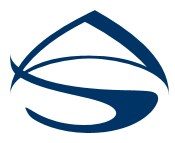Program Overview
Professional Development Program
The organization first needs to identify skills and competencies required for peak performance. This skills/competencies listing may vary per position or job requirements. A competency listing may include such flexibility, collaborative, organization, innovative, problem solving, and/or decision making.
PROGRAM SEGMENTS
A successful professional development program requires communication and interaction between the supervisor/manager and the employee and has the following main segments:
Stage |
Description |
Skill Assessment |
Supervisor/manager and employee independently complete an assessment of the employee’s skills/competencies prior to meeting to discuss potential developmental opportunities. |
Collaborative Analysis Session |
Supervisor/manager and employee discuss employee strengths, areas for improvement, goals, and organizational requirements. They will jointly determine which skills to address over the next review period based on performance and organizational goals as well as competency ratings from the skills assessments. They will also address the best course of action to achieve the optimum results. |
Plan Creation |
Employee, in consultation with supervisor/manager, completes their individual development plan that defines clear objectives to help improve performance. He/she will create a strategy for achieving these goals by choosing from training courses as well as other learning and development activities. |
Plan Implementation |
Employee follows course of action for training and development opportunities identified in plan. |
Skill Application |
The employee will complete a Strategy Implementation Follow-up sheet to assess their knowledge and application of the new skills to their job activities. |
Plan Monitoring / Coaching |
The supervisor/manager will monitor the employee’s progress and meet with them on a periodic (quarterly) basis to discuss their progress and provide feedback. |
Outcome Evaluation |
Supervisor/manager and employee will evaluate effectiveness of training courses and developmental opportunities along with the employee ability to implement the learned behavior into their job functions. |
Skill Assessment
In the initial phase of the development program, both employee and the supervisor/manager will assess the skills and competencies levels of the employee.
- The employee will review the list of skills and competencies and assess their perceived level of mastery of those particular skills/competencies.
- The supervisor/manager will independently review and assess the competence level and list those competencies that would benefit from additional development. They may select to further develop a strength or they may decide to address a development need.
Collaborative Analysis Session
After completion of the assessment, the supervisor/manager and the employee will meet to discuss the results of the assessments and areas of agreement and disagreement. They will then collectively determine which skills to address over the next review period and outline a course of action to achieve the employee’s goals. Together they will identify training courses or other development opportunities in which the employee can participate and enhance the skill (e.g. read a book, etc…).
5 Step Plan Creation
Step 1
The employee will draft a written development plan that states the objectives of development and outline the agreed course of action they will take to achieve those listed objectives and enhance their skills. The action portion of the plan encapsulates the steps that the employee will take to develop his/her new skill or behavior.
Step 2
Although the supervisors/managers will work with the employee to complete their personalized employee’s development plan and provide feedback on their performance, the employees are the ones who are ultimately responsible for their professional development. However, the supervisor/manager should review the plan to ensure that the employee’s performance objectives are achievable, measurable, and tied to our organizations goals. By consciously linking employee objectives to organization objectives helps achieve the two main goals of program; Improve employee performance and increase organizational productivity.
Step 3
After review and feedback by the supervisor/manager, the employee will begin the plan by taking the training courses/action outlined. Approximately 30-60 days after the successful completion of the training course or action, the employee will complete a Strategy Implementation Follow-up form. Utilizing the form, he/she will identify ways he/she has incorporated the new knowledge to their job functions.
Step 4
The supervisor/manager can utilize the development plan on a quarterly basis to discuss the employee’s progress and provide him/her with feedback on his/her performance.
Step 5
Shortly before his/her yearly performance review, the employee will complete a Performance Evaluation sheet indicating how they applied the new skill to his/her job activities and how successful he/she was in achieving his/her objectives.
